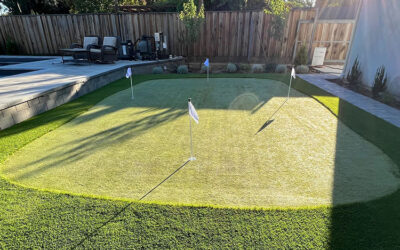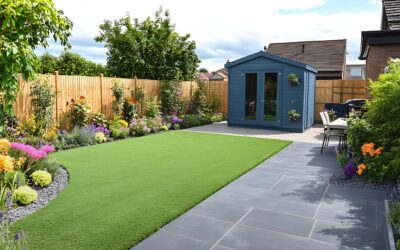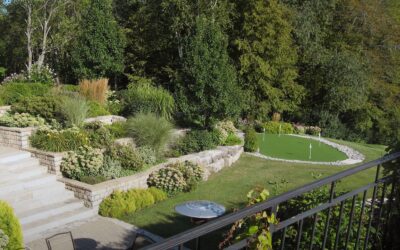
Synthetic turf has become increasingly popular in commercial landscaping as it provides various benefits over natural grass. Synthetic turf is a great long-term investment for any business looking to save both time and money. This blog post will discuss the advantages of using synthetic turf in commercial landscaping, such as durability, low maintenance, water conservation, and more. With synthetic turf, businesses can reduce their landscaping costs and keep their outdoor space looking beautiful. Furthermore, synthetic turf is an eco-friendly alternative to traditional grass, as it does not require the use of pesticides and other chemicals. By opting for synthetic turf, businesses can improve air quality and reduce their environmental impact. Landscaping in Reno Nevada is also a great choice for businesses that want a low-maintenance landscaping solution. With synthetic turf, businesses can avoid the hassle of mowing, weeding, and other lawn care tasks. Synthetic turf is also more durable than natural grass and can withstand heavy use without suffering any damage. Overall
-
Great ROI
One of the most attractive perks of using synthetic turf in commercial landscaping is the great return on investment (ROI). Synthetic turf is a cost-effective solution that can last up to 20 years with proper maintenance and care. This means that while you are paying more initially than you would with a traditional grass lawn, you can rest assured that you will get your money’s worth over time. In addition, you won’t need to spend money on mowing, fertilizing, or weeding the lawn. Plus, the synthetic turf can be used for a variety of purposes, from sports fields to playgrounds, giving you a wide range of options for your landscaping project.
-
Environmentally Friendly
Artificial turf in Reno NV has come a long way since it was first introduced and is now a great material for commercial landscaping. One of the biggest advantages of using synthetic turf is how environmentally friendly it is. Not only does synthetic turf eliminate the need for chemicals, water, and energy-intensive mowing, but it also helps to reduce carbon emissions and improve air quality. Synthetic turf also helps to reduce stormwater runoff, filter pollutants and dust particles, and absorb heat to reduce the urban heat island effect. All these benefits combine to make synthetic turf a great choice for eco-friendly landscaping.
-
Durability
One of the key advantages of using synthetic turf in commercial landscaping is its durability. Synthetic turf is designed to last for many years and can withstand exposure to all kinds of weather conditions. Synthetic turf is also UV resistant, meaning it won’t fade or discolor over time. Furthermore, it is highly resistant to water and doesn’t require regular maintenance, such as watering, mowing, and fertilizing. This makes it an ideal choice for busy commercial landscapes, as it requires minimal effort to keep the turf looking great.
-
Cost Effective
One of the most important benefits of using synthetic turf in commercial landscaping is its cost-effectiveness. Landscaping in Reno Nevada does not require a large amount of maintenance or water, and this can save you money in the long run. Synthetic turf can also last up to 25 years, making it an excellent long-term investment. Additionally, synthetic turf requires less fertilizers and pesticides, so you won’t have to spend as much on those materials either. Finally, you can use synthetic turf to create different designs and features in your landscaping, providing more aesthetic value for the same cost.
-
Safe and Accessible Year-Round
In conclusion, synthetic turf in Reno can be a great choice for commercial landscaping. It requires little maintenance, is safer than natural turf, and looks good year-round. Synthetic turf also helps reduce water consumption, offers drainage solutions, and can reduce the need for fertilizers, herbicides, and pesticides. With all these advantages, synthetic turf is a great option for businesses looking to maximize the appearance and efficiency of their landscaping.







